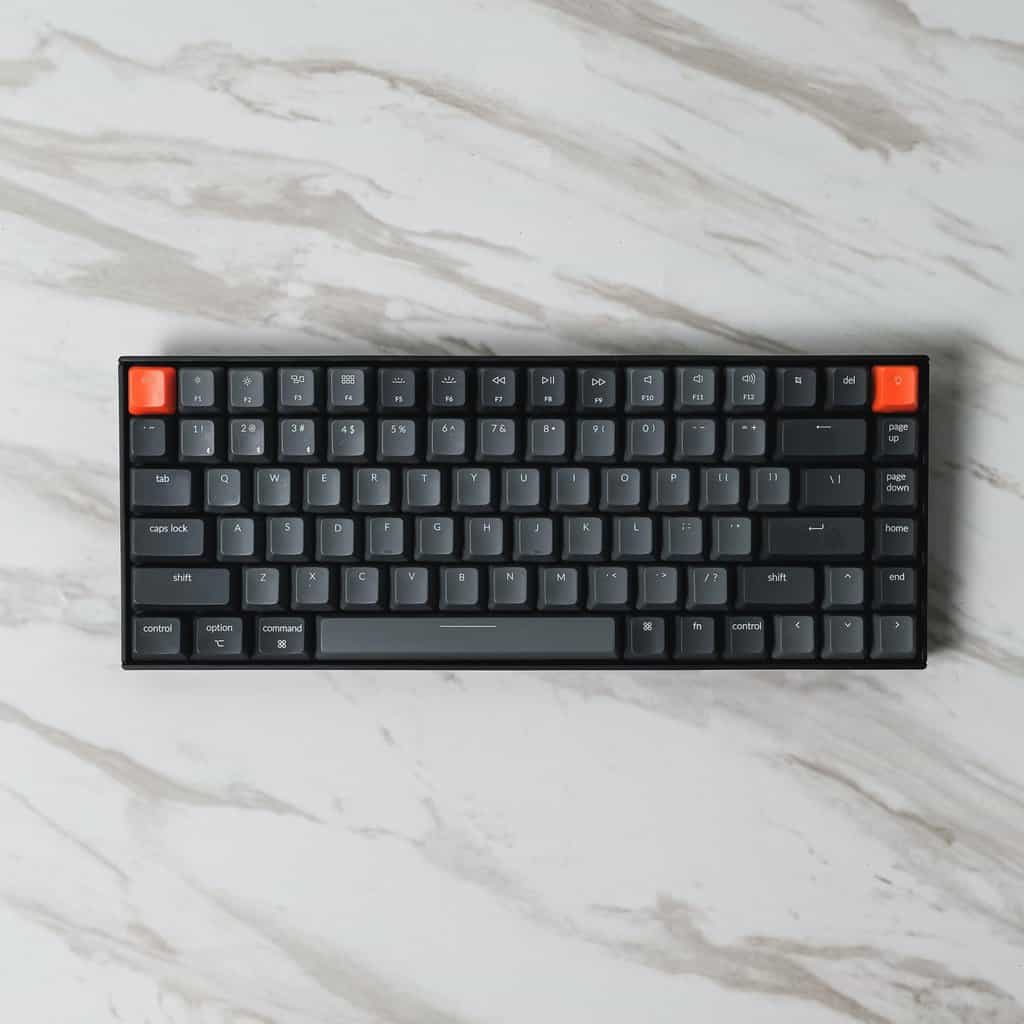Have you ever found yourself frantically searching for the Insert key on your keyboard, only to realize it’s nowhere to be found? Don’t worry, you’re not alone in this mysterious quest. In fact, the location of the Insert key seems to be a well-kept secret among keyboard manufacturers. It’s almost as if they enjoy watching us struggle to find that elusive button. But fear not! In this article, we’ll delve into the depths of keyboard history and explore where exactly you can find that sneaky little Insert key.
While you’re unraveling the mysteries of your keyboard, consider simplifying another aspect of your digital life—your invoicing process. Utilizing a resource like the Electronic Invoice Receipt Template can help streamline your financial documentation, leaving you more time to focus on the quirky puzzles of modern technology.
The importance of the Insert key
The often-neglected Insert key may seem like nothing more than a harmless little button on your keyboard. However, once you discover its true potential and understand its purpose, you’ll find yourself wondering how you ever managed without it. Unlike other keys that command specific actions, the Insert key brings with it a world of possibilities that allow for seamless editing and maneuvering within documents.
One of the most underrated advantages of the Insert key is its ability to switch between two essential modes: overtype mode and insert mode. In overtype mode, every character you type replaces the one in front of it, acting as a convenient backspace feature while simultaneously allowing you to effortlessly make changes within sentences or paragraphs without disturbing surrounding text. On the other hand, insert mode is perfect for adding new content while keeping existing words intact. This innovative function prevents shifts in formatting and saves valuable time by eliminating tedious reformatting tasks.
Even though modern word processors have made vast improvements to document editing features, there are still times when we need to revert to using an actual physical copy—a printout or perhaps a handwritten note—especially during collaborative meetings or when proofreading multiple drafts simultaneously. The Insert key becomes especially handy in these situations as well; by activating overwrite mode on your computer’s word processor while referencing the paper copy next to you, changes can be easily replicated without accidentally deleting any text mistakenly overlooked during manual inspections.

What is the Insert key used for?
The Insert key on your keyboard might seem like a mysterious and often overlooked button, but its functionality can be quite useful once you understand its purpose. The main function of the Insert key is to control how text is inserted into an existing body of text. By default, when you type something while in insert mode, it replaces the characters that follow. However, when the Insert key is activated, new text is inserted at the cursor position without overwriting anything previously typed.
One of the most practical applications of the Insert key is in editing documents or spreadsheets. For instance, imagine you’re working on a lengthy report and suddenly realize that you forgot to include a sentence or paragraph earlier in your document. Instead of manually moving all subsequent content forward to make room for new text, simply activate the Insert key and start typing where you want the additional content to appear. This way, everything shifts automatically without disrupting your flow or requiring additional editing later.
Moreover, if you frequently work with spreadsheets or need to manipulate data in columns and rows accurately, activating the Insert key becomes invaluable. It allows efficient data entry by shifting cells down while inserting new ones above during operations such as copying or pasting rows. Whether you’re managing massive amounts of data or just tidying up simple tables, knowing how to utilize this scarcely recognized yet remarkable feature will undoubtedly save precious time and hassle during any spreadsheet interaction.
Where is the Insert key located?
The enigma of the “Insert” key can leave users feeling perplexed. Many users find themselves tapping absentmindedly on their keyboards, searching for this elusive key. So, where exactly is the “Insert” key hiding? While its location may vary depending on the keyboard model and layout, it typically resides in close proximity to the backspace or delete keys.
Some keyboards feature a dedicated “Insert” key, often found above or below the number pad section. Others integrate it into a different function altogether, like overwriting text when combined with other keys. To further complicate matters, laptop keyboards may require you to press a specific combination of keys or access an external keypad. However, no matter where it hides, its functionality remains consistent – allowing users to switch between insert and overwrite modes while typing.
Despite its somewhat cryptic location on modern-day keyboards, there is still hope for inserting without frustration. And when all else fails; don’t fret! You can always turn to technology and modify your computer’s settings to assign an alternate key combination specially tailored to your needs. With a little perseverance and newfound knowledge about this veiled key’s whereabouts, you’ll have no problem finding your way towards productivity – without getting misplaced in the process.

Different keyboard layouts and variations
When it comes to keyboard layouts, there is a wide range of variations around the world. While the QWERTY layout may be the most common in English-speaking countries, many other languages have their own unique keyboard arrangements. For example, in Germany, they use a QWERTZ layout which swaps the Y and Z keys. In France, you’ll find an AZERTY layout that places commonly used letters like A and E in more accessible positions.
But the differences don’t stop there. There are also ergonomic keyboard layouts designed to reduce stress and strain on the hands and wrists. The Dvorak Simplified Keyboard is one such example that arranges letters based on frequency of use instead of historical factors like the QWERTY layout. Another popular ergonomic option is the Colemak layout which aims for a balance between typing speed and comfort.
For those seeking even more customization, there are programmable keyboards available that allow users to redefine any key’s function or create macros for increased efficiency. And let’s not forget about virtual keyboards on touchscreens which can be adapted based on user preferences.
In conclusion, keyboard layouts are as diverse as languages themselves. From country-specific variations to ergonomic alternatives and fully customizable options, there is no shortage of choices when it comes to finding the perfect keyboard arrangement for your needs. So next time you’re wondering where that elusive Insert key is hiding, remember that it might just be waiting for you in a whole new layout!
Tips for using the Insert key effectively
The Insert key on your keyboard may seem like a forgotten or irrelevant function, but don’t underestimate its potential. With the right understanding and utilization, this key can greatly enhance your productivity and editing skills. One useful tip is to utilize the overwrite mode by pressing the Insert key. This allows you to overwrite text as you type, which is particularly helpful when updating or making changes to existing documents or lines of code. Instead of deleting and re-typing, using the Insert key allows you to quickly make edits on the go.
Another handy application for the Insert key is in spreadsheet software like Microsoft Excel or Google Sheets. By enabling cell edit mode, which can be achieved by pressing the F2 key in combination with the Insert key, you can easily edit data within cells without having to navigate through different menus or use a mouse. This feature saves time and streamlines your workflow when working with large datasets or managing complex calculations.
In summary, don’t overlook the power of the seemingly insignificant Insert key on your keyboard. Whether it’s improving text editing efficiency or optimizing spreadsheet management, utilizing this often-neglected tool will undoubtedly enhance your computer skills and boost productivity levels. Give it a try – you might just be surprised at how much time and effort it saves you in various tasks throughout your day!

Conclusion: The usefulness of knowing about the Insert key
In conclusion, understanding the purpose and functions of the Insert key on your keyboard can greatly enhance your productivity and efficiency while using applications like word processors or spreadsheets. The ability to toggle between overwrite and insert modes allows you to seamlessly manipulate text without having to delete or rearrange existing content. This feature is particularly useful when making corrections or edits in a document, preventing the need for extensive rewriting.
Moreover, being aware of the Insert key’s functionalities can also save you from frustration when accidentally switching to overwrite mode without realizing it. Knowing how to quickly disable this mode can spare you countless hours of reworking or undoing unintended changes.
Finally, understanding the different behaviors of software applications towards the use of the Insert key provides valuable insight into their features and compatibility. Some programs may not support certain functionalities associated with this key or have alternate methods for achieving similar outcomes. By familiarizing yourself with such variations, you’ll be well-equipped to adapt and optimize your workflow accordingly.
By delving into the usefulness of knowing about the Insert key on your keyboard, you unlock hidden potential that can streamline your text editing tasks, safeguard against errors, and tailor your approach when using diverse software applications. Embrace this newfound knowledge as an invaluable tool that empowers you to unleash your creative prowess and harness technology’s full potential in all aspects of life.
